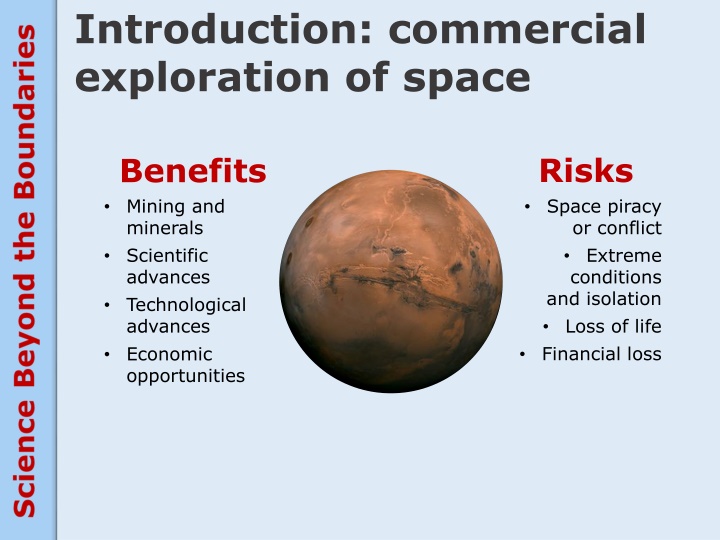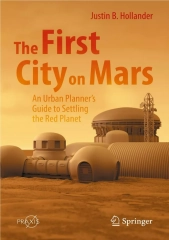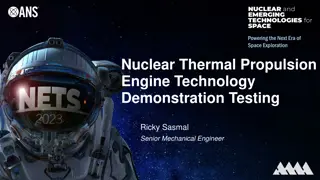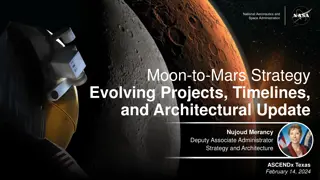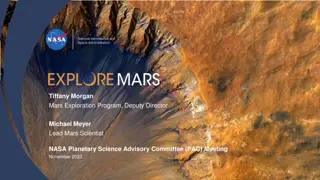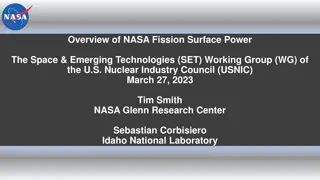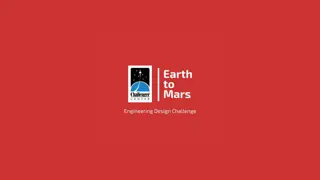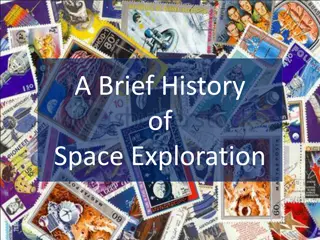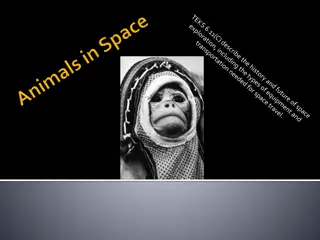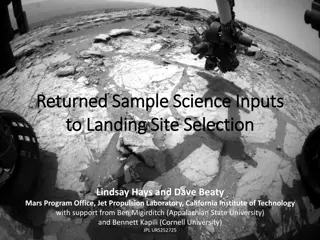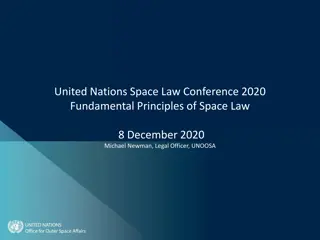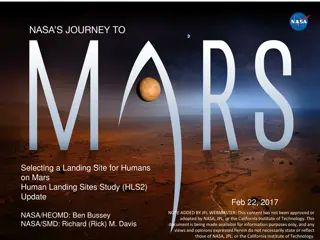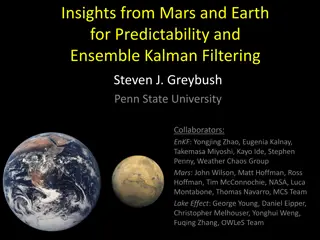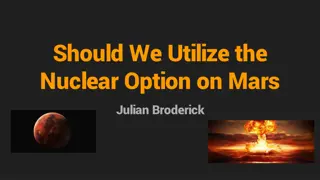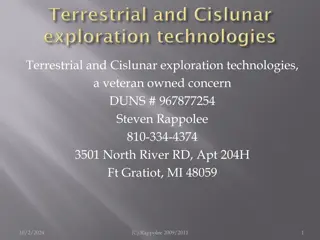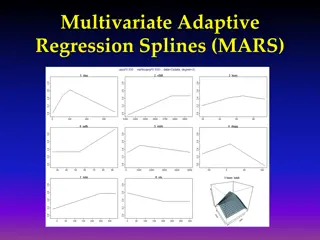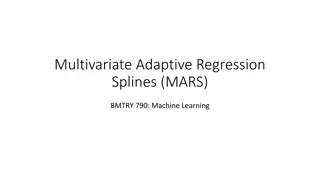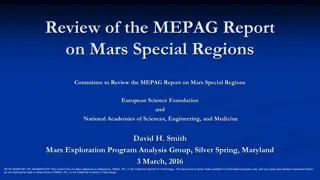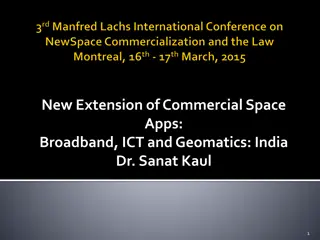Commercial Space Exploration: Risks, Benefits, and Mars Challenges
Delve into the world of commercial space exploration, uncovering risks such as space piracy and extreme conditions, along with the potential benefits of mining minerals and advancing technology. Explore the challenges of designing a sustainable base on Mars to support human exploration, considering the unique conditions and requirements of the red planet.
Download Presentation

Please find below an Image/Link to download the presentation.
The content on the website is provided AS IS for your information and personal use only. It may not be sold, licensed, or shared on other websites without obtaining consent from the author.If you encounter any issues during the download, it is possible that the publisher has removed the file from their server.
You are allowed to download the files provided on this website for personal or commercial use, subject to the condition that they are used lawfully. All files are the property of their respective owners.
The content on the website is provided AS IS for your information and personal use only. It may not be sold, licensed, or shared on other websites without obtaining consent from the author.
E N D
Presentation Transcript
Introduction: commercial exploration of space Risks Space piracy or conflict Extreme conditions and isolation Loss of life Financial loss Benefits Mining and minerals Scientific advances Technological advances Economic opportunities
Commercial exploration of space Design competition Land base on Mars Design competition habitable base on the surface of Mars to support human exploration of the planet. Purpose: Time scale: a fully functioning research base operating with sixteen full time scientists within fifteen years. Specifications: self-sufficient in oxygen, water, food and power, fail-safe back-up provision for all of the essential support systems, all support systems can be fully maintained and repaired in situ, comfortable environment for work and relaxation appropriate for twelve month postings on Mars,
Conditions on Mars Mars spins on an axis in a similar way to the Earth. A day is 24 hours 37 minutes and a year is 687 Earth days. Gravity is 2.7 times less strong than it is on Earth. Very thin atmosphere: mostly CO2; a tiny proportion of water vapour. Average temperature is 63oC. ( 140oC to +30oC). Intensity of solar radiation is 2.25 times weaker than it is on Earth. Surface is mostly volcanic rock covered in a fine powder. Soil holds nutrients such as sodium, potassium, chloride and magnesium. It contains no organic matter. Perchlorates in the soil are poisonous. They can be washed out with water. Other processes can separate them from the water. Distance from Earth varies between 55 Gm and 400 Gm. A one-way message takes between 3 and 22 minutes. Mars does not have a magnetic field to protect its surface from forms of solar radiation harmful to humans. 1 Gigametre (1 Gm) = 1 million km
Commercial exploration of space Land base on Mars A NASA video describing the necessary requirements for a land base on Mars. A B1M video describing one possible solution to building a land base on Mars. A NASA video describing the necessary requirements for a land base on Mars. A B1M video describing one possible solution to building a land base on Mars. 7 Minutes 10 Minutes
Priorities for a land base on Mars To do: Sort the needs cards into an order of priority. Use an ordering system that makes the most sense to your group. To answer: Are there any essential needs that are missing from this list? (What are they?) What challenges will face those living in a land base on Mars? How can these challenges be mitigated (reduced) by careful design? What factors could make compromises to the best design necessary? Who should decide what compromises are acceptable?
Land base on Mars: judging To do: Organise into groups of about five. Each person has five minutes to present their proposal to the rest of their group. Each group agrees on the best proposal to put forward to the final round of judging. Each group prepares a presentation for their best design. Each group has five minutes to present their best design to the class. A class vote decides the winning design.
Expert development groups Several aspects of the winning design now need to be developed further. You will now work in an expert group to develop a more detailed proposal for one of these essential parts of the design: Food production Power generation Oxygen generation Lay out of the base and social organisation Governance and jurisdiction Your design should build on the winning design.
Developing final proposals Work in development teams that include one person from each expert group. Incorporate additional research and ideas gained from working in expert groups. Identify potential issues and determine solutions. 20 mins 19 mins 18 mins 17 mins 16 mins 15 mins 14 mins 13 mins 12 mins 11 mins 10 mins 09 mins 08 mins 07 mins 06 mins 05 mins 04 mins 03 mins 02 mins 01 mins Time up Start 20 minute timer
Presenting final proposals Two students from each group present their group s final proposal to another group. That group feeds back: two positives and a suggested improvement. 05 mins 04 mins 03 mins 02 mins 01 mins Time up Start 5 minute timer
